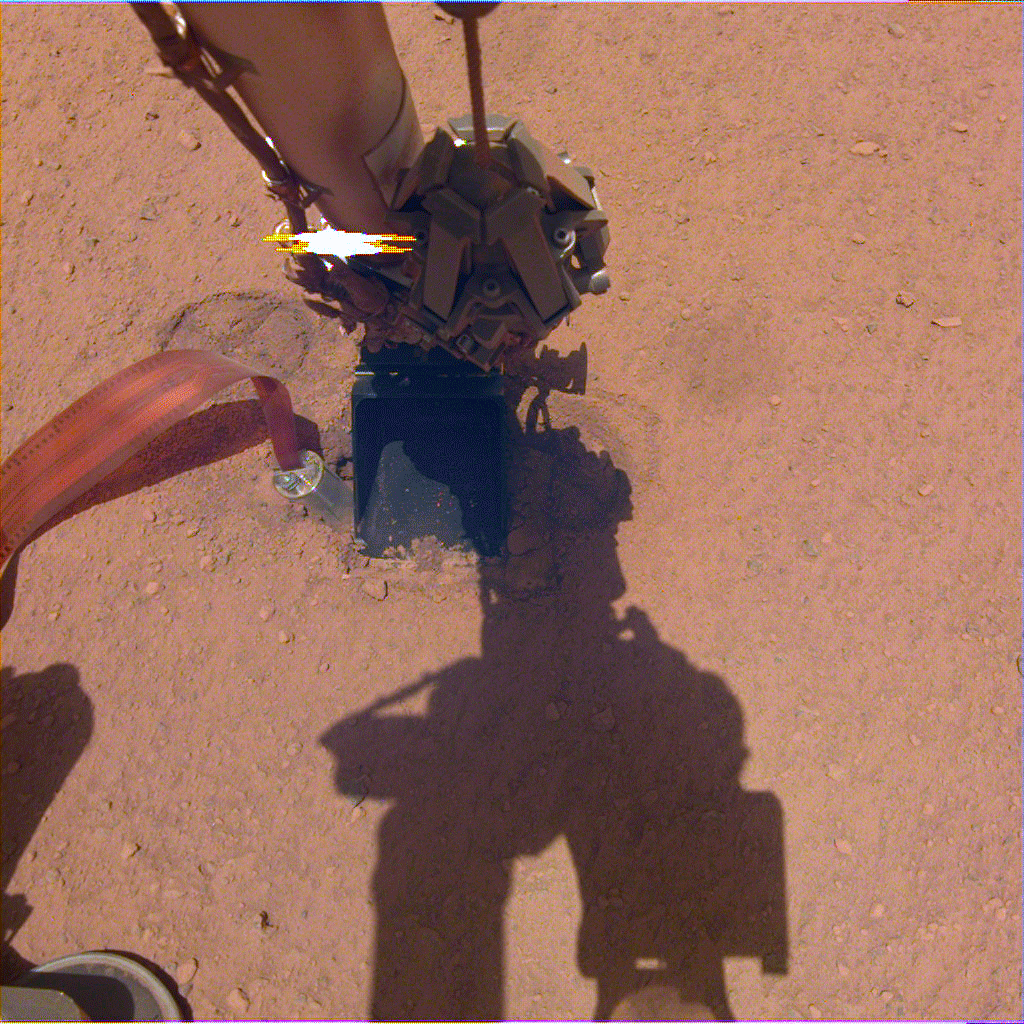NASA has given up on the mole — a gadget that was hypothesise to dig late into the Martian aerofoil — after repeated failed efforts to make the organization work . It was meant to be a major part of the InSight lander mission , but unfortunately Mars had other ideas .
“ We ’ve given it everything we ’ve got , but Mars and our heroic mole remain incompatible , ” said Tilman Spohn , master investigator for the Heat Flow and Physical Properties Package ( HP3 ) mission , in a NASAstatement . “ Fortunately , we ’ve learned a lot that will do good next missions that endeavor to dig into the subsurface . ”
One of those lessons is that Mars is full of surprises : In this case , the Martian regolith , or moth-eaten surface material , did n’t acquit as expected .

Artist’s depiction of the InSight lander with instruments deployed.Illustration: NASA/JPL-Caltech
The German Aerospace Center ( DLR ) recrudesce HP3 for the InSight missionary station , which landed on Mars in November 2018 . The gram molecule was supposed to take internal temperature version of Mars at profoundness strive 10 feet ( 3 meters ) . By doing so , scientist would have a better understanding of the warm national processes that drive much of the planet ’s geology and Earth’s surface organic evolution . bother is , the 16 - inch - farseeing ( 40 - cm ) groyne only managed to hollow down a few inches .
The problems started shortly after the mole was deployed on February 28 , 2019 . Over the course of the past two age , the top of the mole only managed to reset the surface by around an inch . far into the ground it did not go , as the gadget could n’t get the required detrition for down movement . NASA ascribe the trouble to “ duricrust”—a compact , cement - corresponding mixture in which granules bind together . This was not good for the mole , and something the squad had n’t anticipated , harmonize to NASA .
But the team tried to make it knead with various hack , like using InSight ’s automatonlike branch topin the moleagainst the paries of its golf hole . As a last valiant attempt , the seawall was programmed to execute 500 pounding strokes , which it did on January 9 , 2021 , but to no service . NASA has now decided to call off this part of the InSight deputation .

The mole partially popped out of the hole on 19 March 2025, in what was a frustrating setback.Gif: NASA/JPL-Caltech
“ This is why we take risks at NASA — we have to push the limits of technology to learn what works and what does n’t , ” Thomas Zurbuchen , associate administrator for science at NASA home office , state in the statement . “ In that common sense , we ’ve been successful : We ’ve watch a lot that will benefit future missionary work to Mars and elsewhere , and we give thanks our German cooperator from DLR for allow for this instrument and for their collaborationism . ”
https://gizmodo.com/heck-yes-nasas-juno-and-insight-missions-are-getting-b-1846036356
With the mole now permanently retired , mission planners can look beforehand to other things , such as burying the lead that transmits datum and tycoon from InSight to its seismometer . NASA desire to reduce temperature modification that are producing unwanted crackling and popping sound in the seismic signal . To date , the seismometer hasdetectednearly 500 Marsquakes .

Indeed , the show must go on for InSight , which was recently grant amission extensionalong with the Juno probe in orbit around Jupiter . From now until December 2022 , InSight will continue to supervise for Marsquakes , keep cart track of local weather condition , and do a receiving set experiment to mold if the Martian core is in a solid or liquified body politic .
It ’s a pitiful ending to the HP3 project , but this bulwark will finally make for a singular souvenir once humans start up to confab the Red Planet .
InSightNASA

Daily Newsletter
Get the best technical school , science , and culture news in your inbox daily .
News from the futurity , surrender to your nowadays .
You May Also Like













![]()